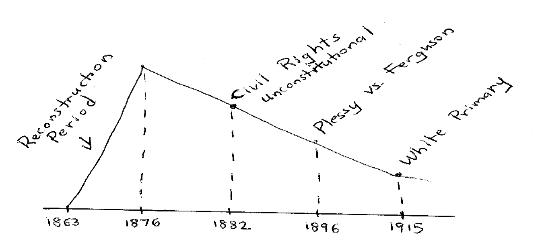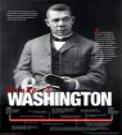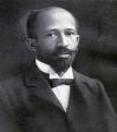| Visit: www.jah-rastafari.com/forum/message-ctgry.asp for discussions on issues concerning the Black Community. |

| CBPM Index: |
| Blacks in the City |
| Please help support the efforts of Gathering our people's Skills, Talents, and Intelligence (Education) & "What our people are Doing?" Make a Donation to CBPM |
| Sponsored by the Collective Black People Movement (CBPM) |
Courses Offered for free here at the CBPM Website include: 1. Blacks in the City Course- A look at the movement of Black People's struggle for freedom in the United States of America from Reconstruction to the Civil Rights Movement. ( Lessons 1, 2, 3, click here, Lesson 4, 5, & 6 see below ) 2. African Revolution - A look at some of the countries in Africa that had to use armed struggle to gain their independence from their Colonizer. Taught by Professor Ernest Dube. Click Here. 3. Caribbean Studies - A look at the history of African People in the Caribbean from slavery to the present. 4. Slavery in the United States - A look of the history of Black (African) People during slavery. 5. More to Come... |
| African History is the history of Black (African) People from all over the world. |
| Introduction to Blacks in the City: |
| Blacks in the City is a class offered at the State University of New York (SUNY) at Stony Brook, by the African Studies Department. Professor Amiri Baraka (Brother Leroy Jones) was the department Chair and also taught the course "Blacks in the City", a look at the struggles of Black People in the United States from reconstruction (1865) to the Civil Rights Movement (1960's). The class is now available here at the Collective Black People Movement (CBPM) website because a member of the CBPM brought their University notes to the Collective to share with our people. CBPM encourages Black People to take good notes in school and to bring this information back to the community to spread the knowledge. In this way, the cost to educate one individual from the community can educate all in the community who has interest. |

| Lessons: 1, 2, & 3...click here Lesson 4: "Blacks in the City" Original Lesson Date 9-11-84: * 60% of American Black People live in the southern belt. * Majority of the states in the U.S. have less than 5% black population. * Civil War was over Slave Labor versus Free Labor. a) Slave Labor - slave as property - chattel system b) Free Labor - Get paid a small wage for service, then they would have to give the money back (slavery hidden) * Constitution 18th Century - definition of blacks as 3/5 of a person. 19th Century - Dred Scott - Blacks have no rights. * Civil War was the Northern Industrialist and Bankers versus Slavocrats and South land owners. * The Republican Party won the rule of the country after the Civil War. At this point, Blacks put all their thrust in the Republican Party. * Blacks were not efficient (they were lazy) in slavery days because if they were efficient they would be a jackass. By being not efficient was another form of resistance. * Modern capitalism need workers that are efficient. * Defeat of Slavocrats meant a defeat of feudalism and capitalist slavery. * Constitutional Amendments as a Result of the Civil War: a) 13th Amendment - says no slavery b) 14th Amendment - Due Process, everyone has the right to a trial. Due process says you can not be lynched before going to trial judged by your peers. c) 15th Amendment - Voting Rights (Blacks are still fighting for now). In 1965 there was a voting rights act, you had to read questions on the constitution of the United States, Pole Tax - you had to pay a pole tax in order to vote. * It is because of voting rights why you don't have any black governors in the south. * 1929-1945 - No black senators in congress. * Today (1984) 100% whites are in the U.S. Senate * March to Selma - County 89% black, but none of them were registered to vote. * 1619-1863 - Blacks in Slavery in the United States. * 1863 - Emancipation of Blacks * Freedman's Bureau - General Howard leader of the Freedman's Bureau. Take 40 acres of land and a mule, this land was taken from the south land owners (aristocrats) and given to each black family. The reason for this is to give the blacks political and economical clout in the U.S. Freedman's Bureau - Responsible for educating blacks and bringing them up to par with other blacks. * Reconstruction Period - (1865-1876) Reconstruction was done for a few years and then stopped. * 1876 - Hayes/Tilden Compromise - Tilden had more popular votes. Tilden said that Hayes could have the votes in these 4 states, but let the people (south land owners) keep their land. Hayes ended up being the President of the United States. * 1865 - forming of the Klu Klux Klan (KKK) * The people who fought against the United States Government was traitors (south whites). Blacks fought with the U.S. Government. * 1867 - Blacks tried to vote, but was stopped by the KKK. * Hayes/Tilden Compromise restored southern control back to the south: a) Moved northern troops out of the south. b) Disarmed Blacks. c) 1876 - Blacks betrayed by the United States Government. * 1876-1915 - Worse time for blacks. Most lynching occurred during this time. * 1882 - The Civil Rights Bill was declared unconstitutional. * Plessy versus Ferguson - "Separate but equal" was not so in reality (beginning of American Apartheid). This remained the law of the land until 1954, Brown versus the board of education. * 1915 - White Primary - Illegal for blacks to vote in the south. (Birth of a Nation) * Syphilis Syndrome - What black people suffered in this country. (Myth - Gods told Syphilis to push a rock up to the top of the hill, but when he got there it rolled down. |
| Tell a Friend |
| Tell a Friend |
| Tell a Friend |




| Syphilis Syndrome - a period of rise and fall for blacks in the United States. |
1876-1915 - Worse time for Blacks
| Lessons: 1, 2, & 3...click here Lesson 5: "Blacks in the City" Original Lesson Date 9-20-84: * In the south whenever you had any democratic decisions, blacks would dominate the polls. * During the Civil War and Reconstruction (1865-1876) was two positive times for Black People in U.S. History * This was stopped by Redeemers and the Klu Klux Klan (KKK). * Syphilis Syndrome -(1820's - 1876) the uptrend for Blacks, beginning of the Black Convention Movement, Slave Narratives, Underground Railroad, Slave Rebellions. * Couple of Negative Incidents during this time a. Fugitive Slave Law b. Dread Scott Case - in 1856 a slave moved to a free state. The U. S. Supreme Court says slaves have no rights. * 1820's - 1876 - Fredrick Douglass leader for Blacks during this time. * 1876 - Negative Trend begins with a gigantic turn around with the Hayes / Tilden Compromise. * The Hayes Tilden Compromise restored power to the slave land owners which got transformed to the north bank owners. * The Hayes Tilden Compromise restored the whole control of the south to the Southern Slave Masters who fought against the United States. * 1882 - Civil Rights Movement Bill declared Unconstitutional. * 1882 - Migration of Blacks of Blacks to the North * 1915 - Grandfather Clause said you could only vote if your grandfather voted. * Pre-Civil War - Blacks leaving southern cities to country sides. * Post Civil War - Blacks returning to the cities in numbers for safety and goods. * In the cities there were more goods, services, institutions, better education, hospitals, which was not in the rural areas, and safety because the Klu Klux Klan had formed. * 1880's - Blacks left southern cities to get away from southern control and followed 2 miles behind the Union Army. * Klu Klux Klan stated it was formed to protect white women from rapes, but in actuality the KKK was formed for white political control. * 1882 - Blacks starting to leave the south, but majority of Blacks still in south. * The real deal about the Hayes / Tilden Compromise is about money and power control. * 1880's - Blacks migrate north, because of the KKK, and they were able to get jobs in northern industries. * Henry Ford gives some Blacks jobs, but cheap wages. * 1896 - Separate, but Equal - Booker T. Washington leader for the Blacks during this time, founded Tuskegee Institute in Alabama. * Booker T. Washington went along with some of the politicians, because of personal gain. He spoke with Presidents, he said, " we (Blacks) needed vocational training". * 1901 - W.E.B. DuBois - attacks Booker T. Washington in the book "Souls of Black folks". * In the book "Pre-Civil War Black Nationalism", by Bill McAdoo, there was three tendencies for Blacks a. Back to Africa - went to Liberia and Sierra Leone b. Submit - give up struggle for self-determination c. Stay and Fight * Some Blacks went to Sierra Leone and set up the same institutions as the whites had here in the U.S. * From the end of the 1800's, the principle of the Black Movement changed from back to Africa to stay and fight. * Leaders of Blacks killed (Dr. Martin Luther King Jr., Malcolm X & ...) because they represented the needs of Blacks and their right for self-determination. * After the first 150 years of Blacks being in America, their policy came to be stay and fight. * DuBois said that either America would become equal amongst people or cease to exist. * 1880's - 1960's - Blacks migrated from south to north. * After 1960's, Blacks move back to the south. * 60% of Blacks live in the south today. * 80% of Blacks born in the south today. |


| Fredric Douglass |
| Booker T. Washington |
| W.E. B. DuBois |
| Visit Professor Amiri Baraka's website: www.amiribaraka.com |
| Visit Professor Amiri Baraka's website: www.amiribaraka.com |
| Lessons: 1, 2, & 3...click here Lesson 6: "Blacks in the City" Original Lesson Date 9-25-84: * Reconstruction (1865 - 1876) Brought: 1) A more democratic government. 2) Free public Schools - Before reconstruction there was no free or public schools. Today's education of society is only 125 years old. 3) More social legislation a. Opening the ballet and jury box to blacks and poor whites. b. Abolition of cruel and unusual punishment. * When Reconstruction changed (stopped), the advances brought with reconstruction changed radically for blacks. * By 1900's, 22.7% of Blacks live in the cities. The other 77% live in country districts. * About 7% live in cities with over 10,000 Blacks. * 1865 - 4,000,000 Black People live in the United States of America. * 1900 - 8,000,000 Black People live in the United States of America. * 1984 - 30,000,000 Black People live in the United States of America. * Dubois estimated that about half of the blacks in 1900 were the working forces. 1) 2,000,000 - general labors (blue collar workers) 2) 1,200,000 - semi skilled workers 3) 250,000 - petty bourgeoisie (teachers, preachers, merchants, white collar workers, lawyers, doctors, small business owners...) * 1900 - 75% of Blacks lived in the south. * 1980 - 95% of Blacks who work are still blue collar workers, machine operators, work in steel mines, factory workers, and truck drivers. * Urban versus Rural slaves - Urban slaves were more free because they went on errands freely without passes and rural slaves worked on plantations and had overseers watching them continually. * Urban Slaves lived usually with masters or behind his big house or in a little slave ghetto. They either lived in center of the city and around the edges of the city. * The Dutch let the black slaves free after the blacks petitioned for their freedom after 20 years. The Dutch wanted them to live out of the city, this is how the first black community and the first theatre formed in Greenwich Village. * Urban Renewal - wanted to get rid of Black center city ghetto's. * From looking at the numbers there was a class system developed by the community, but this was existing before with the house slave and field slave. * Many masters got their offspring's (house slaves) off the plantation with a trained skill. * Field slaves got freedom from running away or doing an exceptional deed like saving the masters life. * From the house slaves, came the Black Bourgeoisie and petty bourgeoisie. Some of them even owned business and other slaves. So we say class distinctions from slavery days. * Most of the petty bougeoisie was descendant from house slaves and free slaves. * 1900 - In Philadelphia, 54% of blacks was from the south, 37% was originally from Philadelphia and they lived in homes with 3 or less rooms. Only 13% had bathrooms with their houses. * The reason why blacks lived together in cities were: 1) SAFETY - Safety in numbers 2) ECONOMIC - Could not afford to move 3) LEGAL - Blacks only could live in this area. * Sharecropping - was slavery continued, it was a legal way to tie blacks to the land after slavery. * 1880 - If blacks in the south did not have $50 in their pocket, they were a Vagrant because they were caught walking without money in their pockets. * This was called Peonage and they would have to serve 6 months on a plantation. * In California, the prison system is the third largest industry, they make the 3rd largest productions of goods and only pay the prisoners 25 cents a day. This is another extension of slavery. * 1865 - Blacks are Free. * 1896 - Plessy versus Ferguson - Separate but Equal. * Segregation - in the Army did not stop until in the 1950's after the Korean War, mainly because the southern armies did not want to be side by side with blacks. * 1951 - Slaughter of the 24th Black Brigade when the Americans pulled out all the brigades out of Korea and left the Black Brigade to take on the 5 Brigades of Chinese, which the blacks got slaughtered. * Freed Blacks were not considered slaves or citizens, they would be considered second class citizens or the oppressed nation. * National Oppression - oppression of a whole nationality or nation of people. * Racism - Oppression cause of physical feature. * Black People across the board experienced national and racism oppression. * Even the Black Bourgeoisie suffered national and racism oppression. * When after World War II, the United States set up themselves as the representative of the Free World Leaders, but the contradiction was how the United States treated its own blacks. * They had police arrest the Ambassador of Nigeria, so they had to change how they treated immigrants. |

| Lesson 7: Click Here |
| Celebrating Black History 365 Days of the year enter: Here |
| More on the Collective Black People Movement (CBPM): CBPM USA: Arkansas Alabama California Florida Georgia Illinois Louisiana Maryland Massachusetts Michigan Listings Minnesota Mississippi Missouri New York North Carolina Ohio Pennsylvania South Carolina Tennessee Texas Washington DC Other States of the United States CBPM Africa: Angola Burkina Faso Congo Ethiopia Gabon Ghana Guinea-Bissau Namibia South Africa Sudan Swaziland Zimbabwe CBPM International: Costa Rica England Haiti Jamaica Thailand Trinidad And Tobago Russia Venezuela |


